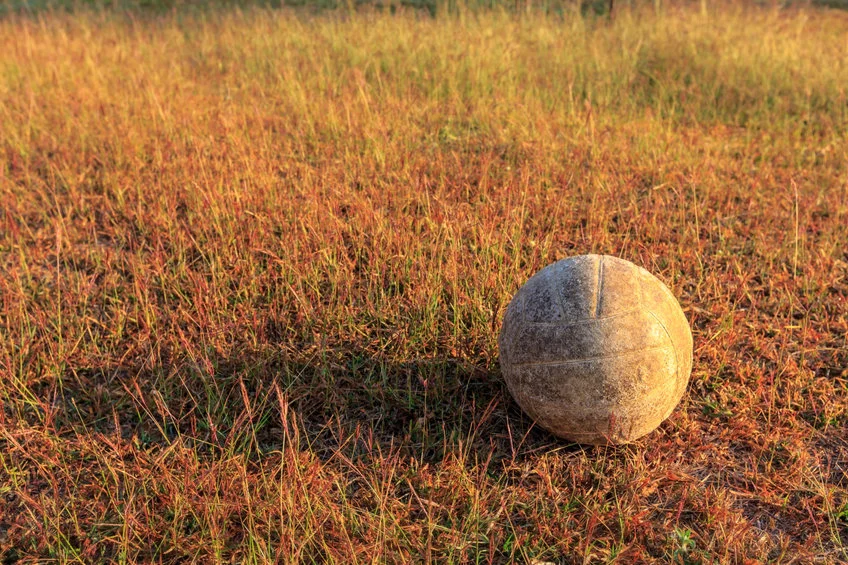Fungus in trees and on lawns can be a big problem for your yard. Tree fungus can harm or even kill trees. Knowing what to look for and getting help early can increase the chances of saving your trees, plants, and grass.
Here are a few of the more common types to look out for.
Tree Fungus Types

Leaf spot, or leaf blight, is a tree fungus that weakens trees by interrupting the photosynthesis process. This ultimately leads to leaf loss.
The disease initially shows up as small brown circles on leaves. They eventually turn into larger splotches as the spots spread.
This disease is an example of a disease that focuses on leaves moreso than trees, as evidenced by the featured image being the leaf of a tomato plant.

Powdery mildew is another fungus that affects trees. It appears as a powdery white substance on the surfaces of the leaves. This substance is actually millions of tiny fungal spores.
These spores will cause a decline in the tree’s vigor. It also causes leaves to turn yellow or brown. It can cause a premature drop of the tree’s leaves as well.

Oak wilt is probably the most serious of the fungal diseases that affects trees. It causes the death of Texas trees in epidemic proportions every year. It is caused by the fungus Bretziella fagacearum and is one of the most destructive diseases in the entire US.
Oak wilt acts by invading and disabling the water conducting system in susceptible trees. While all oak varieties are at risk, Red Oaks seem to be at higher risk.
To an untrained eye, this disease can look a lot like a leaf that is simply turning in the autumn. But if the color changes are stark in a single leaf, and/or it is not fall, you may be facing oak wilt.
RELATED TIP: Preparing Lawn for Fall

Anthracnose is a group of related fungal leaf and stem diseases. They often follow a wet, cool spring. It most commonly affects deciduous trees including Dogwood, Maple, Oak, Sycamore, and Ash.
Symptoms of this fungus include: small dead spots on leaves, browning areas along leaf veins, premature defoliation twig death, and dying buds early in the season. The damage can sometimes be confused as frost damage when it first appears.
This is another disease that can affect the leaves of vegetables in addition to trees, as the featured image is that of a diseased cucumber leaf.

Hypoxylon canker is a fungus that can affect almost any hardwood or oak trees. It is common in Texas and found in urban areas of North Texas. It does not affect healthy trees, but trees are at risk when their vascular system has been exposed to the elements.
This infection can be caused by lawn equipment like weed eaters or lawn mowers, so take care when doing yard work. Pruning can also expose these systems. Early symptoms are tree crowns thinning and dry and dying branches.
The fungus invades the bark system by forming white spores. It is a deadly and contagious disease and should be treated as soon as possible. Trees are not the only ones susceptible to fungus in your yard. Grass fungus can also cause big problems if not treated or prevented.
Lawn Fungus Types

Brown Patch is a fungus caused by a single species called Rhizoctonia. It is common during warm and humid weather conditions.
This disease starts as dark, circular patches on the lawn that grow outward. It can be fast moving and highly destructive.
RELATED TIP: Landscaping where Grass Doesn't Grow
Learn more about brown patch lawn disease from our friends at Neil Sperry’s Gardens.

Large patch is the same fungus that causes brown patch, but in the cooler fall and spring weather with excessive moisture. It loves warm season grasses and causes large patches of yellowing grass.
This fungus is always present in lawns but can cause trouble when lawns are not properly aerated as it spreads through the thatch layer. It infects the grass sheaths and roots.

Dollar spot fungus is named for the small, silver dollar sized circles that characterize the fungus. It starts small but can spread rapidly.
Dollar spot normally appears on lawns with low moisture and poor fertility. This means that if your grass is dry and inconsistently mowed, it may be vulnerable.

Summer patch is characterized by irregular brown patches in lawns. It kills grass by infecting and destroying roots.
Summer patch disease forms on lawns that are in direct sun and are therefore exposed to excessive heat, hence the name “summer patch.”
This disease moves quickly and can destroy entire lawns by rotting grass down to the soil.

Rust lawn disease is a fungus most likely to damage fescue, zoysia, and perennial rye grasses. It starts as small, yellowish spots on the grass blades which eventually turn the color of rust.
This fungus thrives in excessive moisture or shade. Yards that are already stressed are more vulnerable to rust lawn disease.
By properly caring for lawns and trees, most of these fungi can be prevented. Knowing what to look for and getting treatment early is also important for your yard’s health.
If you’re looking for a team of seasoned professionals to take care of your lawn and landscaping needs, Evergreen has you covered. Visit our Landscaping service page to learn more.



Comments (0)
Thanks for your comment!
Thanks for your feedback! Your comments have been successfully submitted! Please note, all comments require admin approval prior to display.
Error submitting comment!
There is a problem with your comment, please see below and try again.